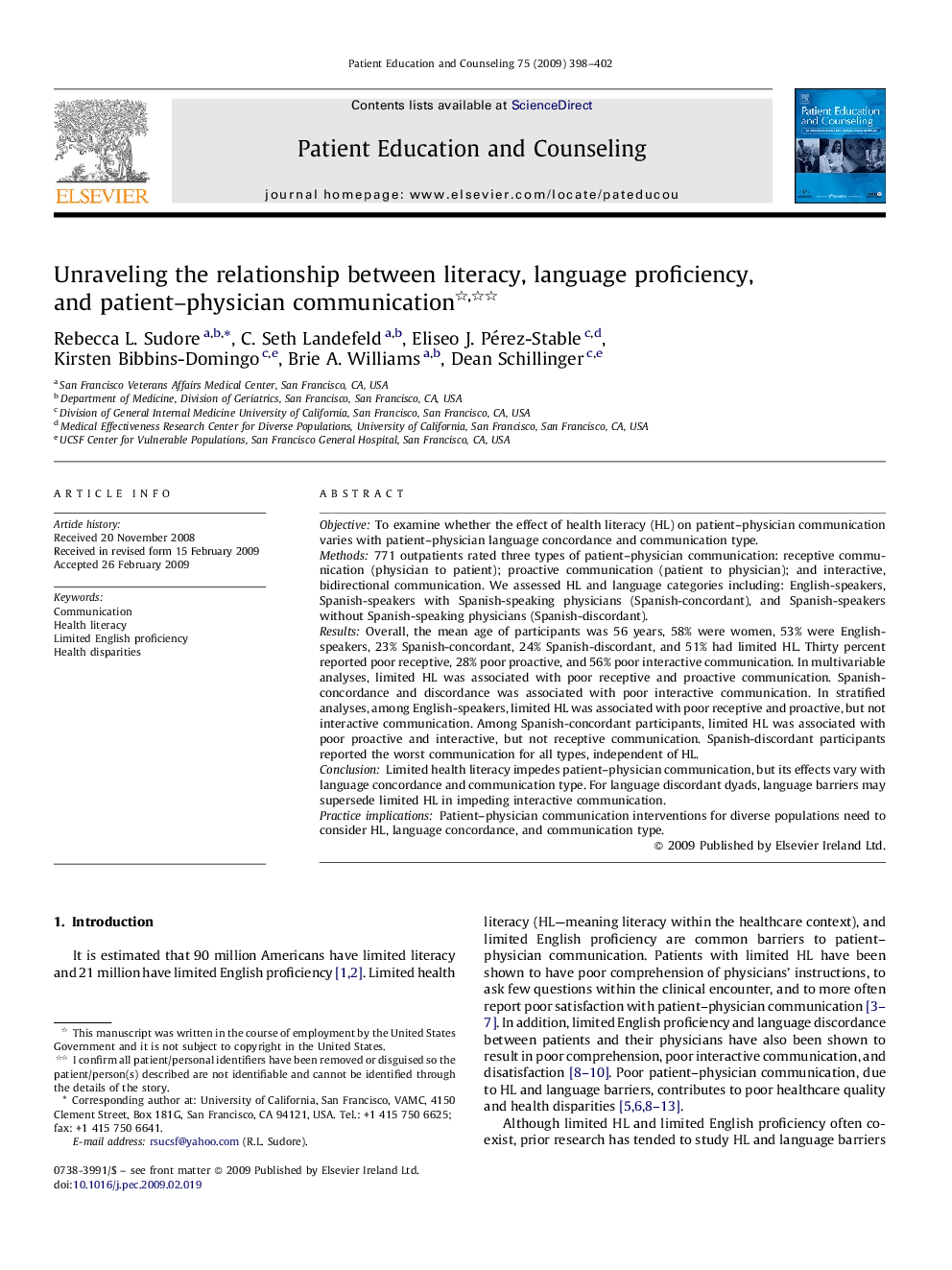| کد مقاله | کد نشریه | سال انتشار | مقاله انگلیسی | نسخه تمام متن |
|---|---|---|---|---|
| 3814032 | 1245985 | 2009 | 5 صفحه PDF | دانلود رایگان |

ObjectiveTo examine whether the effect of health literacy (HL) on patient–physician communication varies with patient–physician language concordance and communication type.Methods771 outpatients rated three types of patient–physician communication: receptive communication (physician to patient); proactive communication (patient to physician); and interactive, bidirectional communication. We assessed HL and language categories including: English-speakers, Spanish-speakers with Spanish-speaking physicians (Spanish-concordant), and Spanish-speakers without Spanish-speaking physicians (Spanish-discordant).ResultsOverall, the mean age of participants was 56 years, 58% were women, 53% were English-speakers, 23% Spanish-concordant, 24% Spanish-discordant, and 51% had limited HL. Thirty percent reported poor receptive, 28% poor proactive, and 56% poor interactive communication. In multivariable analyses, limited HL was associated with poor receptive and proactive communication. Spanish-concordance and discordance was associated with poor interactive communication. In stratified analyses, among English-speakers, limited HL was associated with poor receptive and proactive, but not interactive communication. Among Spanish-concordant participants, limited HL was associated with poor proactive and interactive, but not receptive communication. Spanish-discordant participants reported the worst communication for all types, independent of HL.ConclusionLimited health literacy impedes patient–physician communication, but its effects vary with language concordance and communication type. For language discordant dyads, language barriers may supersede limited HL in impeding interactive communication.Practice implicationsPatient–physician communication interventions for diverse populations need to consider HL, language concordance, and communication type.
Journal: Patient Education and Counseling - Volume 75, Issue 3, June 2009, Pages 398–402